Friday, 11 March 2011




Pavel Büchler
Work from his oeuvre.
“Büchler belongs to a generation of artists directly influenced by the discoveries of 1970s conceptual art – or, as he insists, by the creative misunderstandings that conceptual art suffered in translation to the Eastern European cultural and political context. Summing up his own practice as “making nothing happen”, he is committed to the catalytic nature of art – its potential to draw attention to the obvious and revealing it as ultimately strange.” – Tanya Leighton Gallery
Tags: armory, Czech, eclipse, england, light, meta, old technology, slide projector, turner prize
Posted in Uncategorized | Comments Off on Pavel Büchler
Thursday, 10 March 2011



Sebastien Verdon
Work from his oeuvre.
“The artist draws on current expectations, general paralysis, creativity and inspiration from which a great instinct for transforming the contemporary melancholy humor singular, that is neither cynical nor just absurd. A job that tends to capture the indeterminate, an aesthetic that seeks ambiguity in games of tension between the mental and physical, between reality and artifice, and hermetic readability, lucidity and innocence. His affinity with lavish photography coherence to its research around the concepts of objectivity and whether or not to capture reality. His work, particularly its celestial and stellar photographs, are an indication of a sincere dialogue and perceptive to the intangible.” – Sebastien Verdon translated via google
via Adam Cruces
Tags: awesome, installation, photo sculpture, space, superdutch, void
Posted in Uncategorized | Comments Off on Sebastien Verdon
Wednesday, 9 March 2011



Daniel Everett
Work from Conversations with a Computer.
“Contained within the operating system of Mac computers is a rudimentary electronic psychotherapist program. Meant to simulate a Rogerian therapist, it engages the participant in a cyclical conversation by taking his or her statements and roughly reconfiguring them into questions. I met with this program three times a week for a month in order to discuss my fear that I was disappearing completely. These are three stills from our conversations.” – Daniel Everett
Tags: ai, computer, humor, logic, performance, technology, therapy
Posted in Uncategorized | Comments Off on Daniel Everett
Tuesday, 8 March 2011
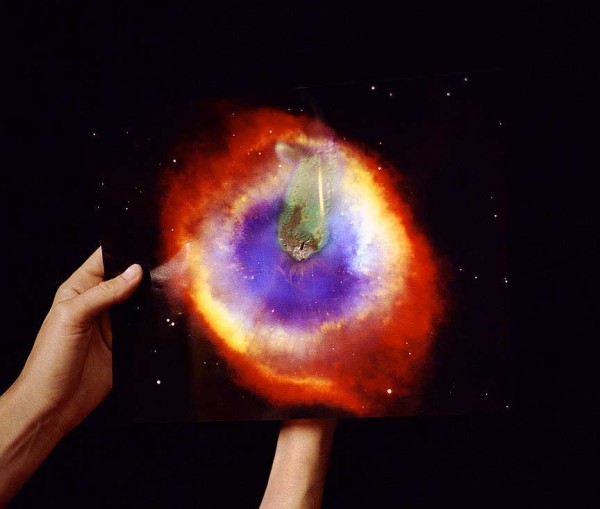


Allora & Calzadilla
Work from Back Fire.
“The ‘Back Fire’ series are colour photographs of constellations, stars and galaxies, which have been set fire to from the back with matches. This action has generated a new space both physically and photographically. The burning of the photograph fires-back an unstable image, which has been re-photographed at precisely the moment of ignition.” – Lisson Gallery
Tags: armory, astronomy, burning, collaboration, damage, fire, process, space, stars
Posted in Uncategorized | Comments Off on Allora & Calzadilla
Monday, 7 March 2011
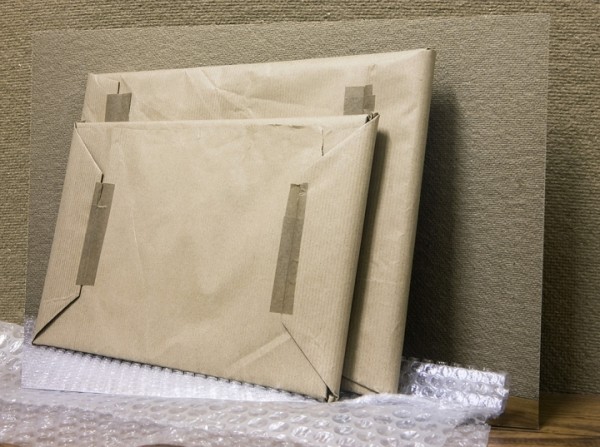
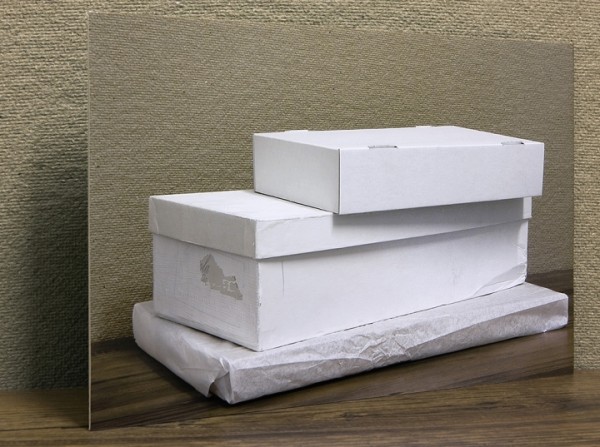

Miriam Böhm
Work from her oeuvre.
“In her photographs, Böhm enquirers into the very nature of the art object; how it is made, perceived, and how way we derive meaning from it. She uses the act of photography as a series of iterations, taking many photographs of one object or motif, from different perspectives, and then arranging these pictures into three-dimensional arrangements. These are then re-photographed several times to make seamless images. Employing a documentary-style, Böhm uses common, almost deadpan, motifs, such as landscapes, fragments of buildings, plants, flags, or materials, including fabric, marble, and cardboard. By assembling different views into one picture, Böhm attempts to develop an image-language that functions differently than our usual way of reading a straight photographs.
With this new series of work, Böhm explores the idea of the art object as inventory. As in her previous work, the gaps between the photographs, shadows, changes in color and scale, become integral parts of the composition and of the image. Even the surfaces and fabric backgrounds, against which she photographs, become both grounds for presentation and elements within the work. Böhm’s artistic practice utilizes the conceptual techniques of re-photography and appropriation, as well as several traditional techniques usually referred to as studio practices. By analyzing all the different steps, in terms of concept, model, reference, content, form, and presence, Böhm’s proposes new ways of examining ideas of photographic representation and pictorial illusion.” – Ratio 3
Tags: armory, berlin, bubble wrap, meta, packaging, process, special, superdutch
Posted in Uncategorized | Comments Off on Miriam Böhm
Sunday, 6 March 2011

Ofer Wolberger
Work from Covers
“Ofer xeroxed old, cloth-bound book covers creating a complete black and white book. by isolating each book title and removing it from its literary context, Ofer allowed the simplicity of the word, the font, and the design to reveal itself.” – i heart photograph
Tags: book, recontextualization, scan, text, title, xerox
Posted in Uncategorized | Comments Off on Ofer Wolberger
Saturday, 5 March 2011






Justin Kemp
Work from Adding to the Internet
“My art is kind of like listening to someone speak with an English accent, because at first, it sounds kind of smart, but after a few minutes it just sounds a little funny. Sometimes people laugh at someone with an English accent instead of laughing with them, because some people just don’t get it.” – Justin Kemp
Tags: add, google, google image search, internet, one-liner
Posted in Uncategorized | Comments Off on Justin Kemp
Friday, 4 March 2011
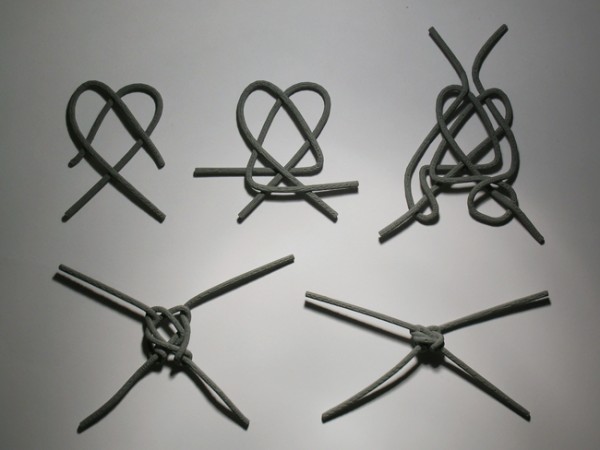

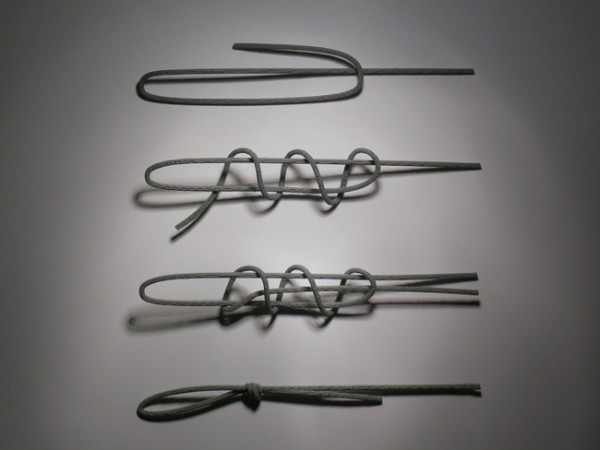
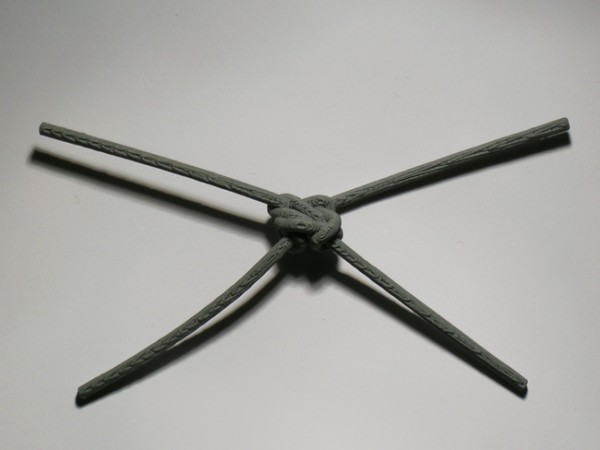
Nathan Hess
Work from Craft is Caring
“During my childhood, knot tying was almost an object of folklore. I grew up in an industrious and old-fashioned town of 800. Despite the setting, knot tying as a craft unto itself was already a relic of previous generations. While it was required knowledge for my Grandfather, it now holds the aura of a dead language. This series is a simple but wholehearted attempt at layering a disappearing art with an emerging art, juxtaposing two seemingly disparate but closely related methods of fabrication.” – Nathan Hess
Tags: 3d, knot, new/old, rapid prototype
Posted in Uncategorized | Comments Off on Nathan Hess
Thursday, 3 March 2011




Clement Valla
Work from Bridges.
“My work focuses on socio-technical systems that raise a number of interesting questions about authorship and human/computer relationships. I explore digital technologies that are not simply new tools to create and distribute copies of things but that also enable new social relationships through which people produce multiples. I treat existing artifacts, existing site conditions, market relationships, or networked and collaborative systems as programmable systems, using simple algorithmic methods: copying, repetition, iteration. When my programs run their course, inherent contradictions and absurd situations result from the very structure of the system itself, producing unfamiliar artifacts and juxtapositions.
Like an anamorphic projection, my programs produce distortions that reveal their own underlying logic, but also point to the system as it functions when we fail to notice it- when it works conventionally.” – Clement Villa
Tags: bridges, distortion, fresh, google, google earth, maps, new media, risd, technology
Posted in Uncategorized | Comments Off on Clement Valla
Wednesday, 2 March 2011
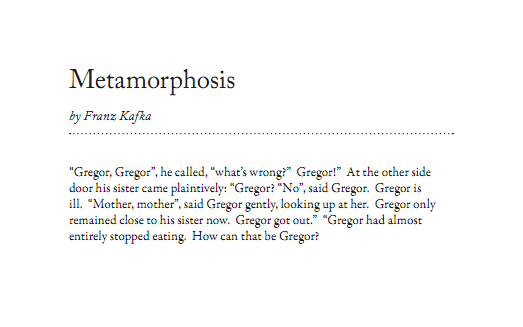
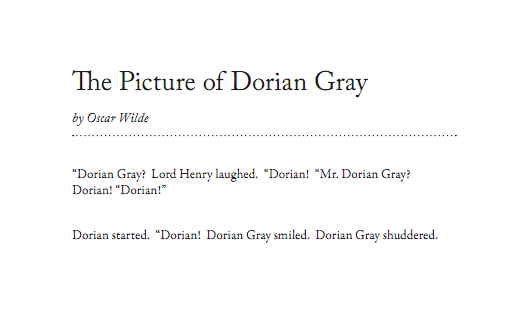


Jason Huff
Work from AutoSummarize and The Story of Art.
Huff is showing in .gif .jpg .png .tif tomorrow night at HERE – 145 Sixth Avenue (entrance on Dominick St., one block South of Spring St.). Check it out – Thursday, March 3, 5-7PM.
“In the midst of the Internet excitement over the meme “I Write Like,” (does it really work? What’s the algorithm? Why does everyone end up writing like Stephen King?), the literary blog “The Valve” pointed to a another fun combination of computers and literature.
For his “Auto Summarize” project, the graphic designer Jason Huff took the one hundred most downloaded copyright-free books and reduced them each by ten sentences with Microsoft Word 2008’s AutoSummarize function. The result is absurd and also quite funny.
…
Is there really anything else?
The past year or so has brought a few technological reworkings of great books. Sarah Schmelling transposed classics into Facebook pages (her “Hamlet” newsfeed can be read here). Emmett Rensin and Alexander Aciman, both students at the University of Chicago, did the same with Twitter. For me, the humor in this kind of retelling always comes from hearing a recognizable tale in a modern, clipped voice. I like how Hamlet becomes “a fan of daggers” on Facebook and takes the time to tweet “Uncle just confessed to Dad’s murder.” The projects always come with an ominous undertone, though. Is this how the students of the future will read Shakespeare?” – Madeleine Schwartz
Tags: artificial intel, autocomplete, books, computer, digital, here arts, risd, smart, technology, text
Posted in Uncategorized | Comments Off on Jason Huff


































